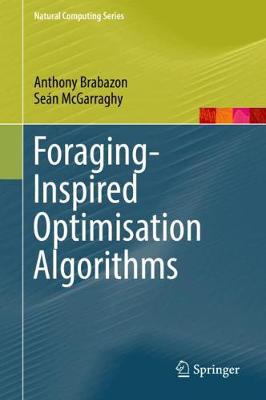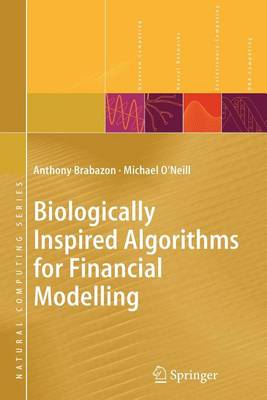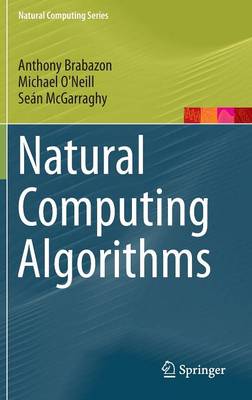Natural Computing
3 total works
Foraging-Inspired Optimisation Algorithms
by Anthony Brabazon and Sean McGarraghy
This book is an introduction to relevant aspects of the foraging literature for algorithmic design, and an overview of key families of optimization algorithms that stem from a foraging metaphor. The authors first offer perspectives on foraging and foraging-inspired algorithms for optimization, they then explain the techniques inspired by the behaviors of vertebrates, invertebrates, and non-neuronal organisms, and they then discuss algorithms based on formal models of foraging, how to evolve a foraging strategy, and likely future developments.
No prior knowledge of natural computing is assumed. This book will be of particular interest to graduate students, academics and practitioners in computer science, informatics, data science, management science, and other application domains.
Biologically Inspired Algorithms for Financial Modelling
by Anthony Brabazon and Department of English Michael O'Neill
Predicting the future for financial gain is a difficult, sometimes profitable activity. The focus of this book is the application of biologically inspired algorithms (BIAs) to financial modelling.
In a detailed introduction, the authors explain computer trading on financial markets and the difficulties faced in financial market modelling. Then Part I provides a thorough guide to the various bioinspired methodologies - neural networks, evolutionary computing (particularly genetic algorithms and grammatical evolution), particle swarm and ant colony optimization, and immune systems. Part II brings the reader through the development of market trading systems. Finally, Part III examines real-world case studies where BIA methodologies are employed to construct trading systems in equity and foreign exchange markets, and for the prediction of corporate bond ratings and corporate failures.
The book was written for those in the finance community who want to apply BIAs in financial modelling, and for computer scientists who want an introduction to this growing application domain.
Natural Computing Algorithms
by Anthony Brabazon, Michael O'Neill, and Sean McGarraghy
The field of natural computing has been the focus of a substantial research effort in recent decades. One particular strand of this research concerns the development of computational algorithms using metaphorical inspiration from systems and phenomena that occur in the natural world. These naturally inspired computing algorithms have proven to be successful problem-solvers across domains as diverse as management science, bioinformatics, finance, marketing, engineering, architecture and design.
This book is a comprehensive introduction to natural computing algorithms, suitable for academic and industrial researchers and for undergraduate and graduate courses on natural computing in computer science, engineering and management science.


